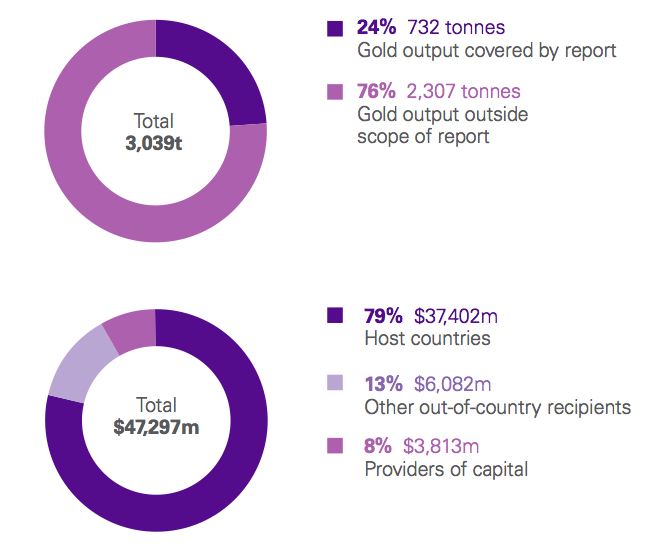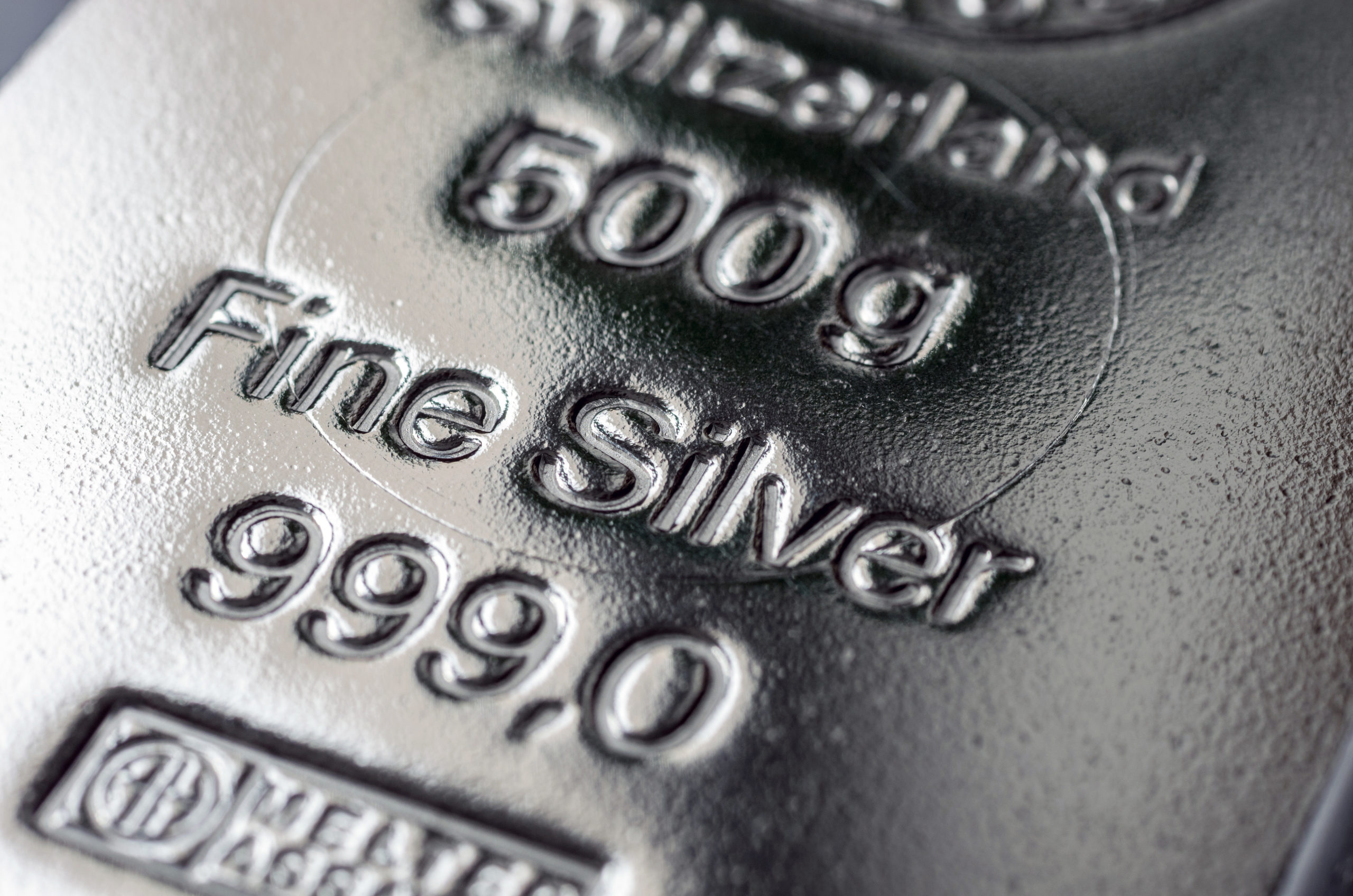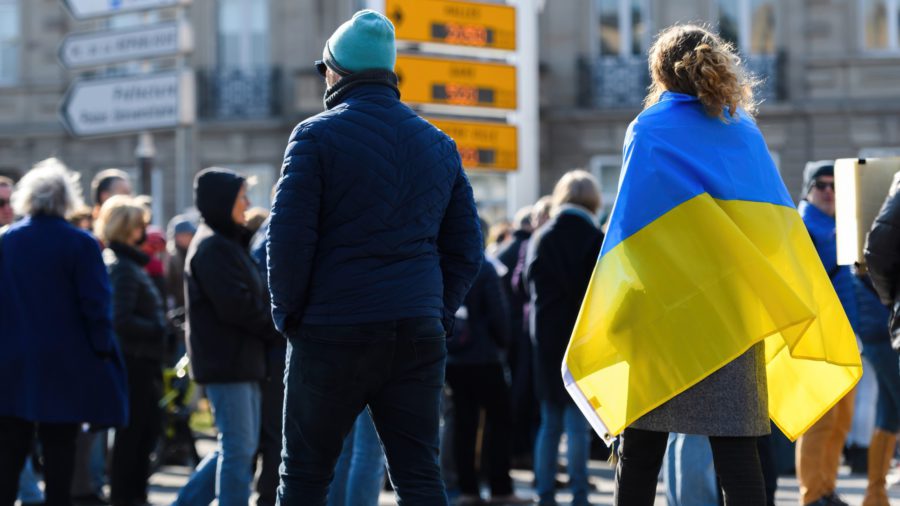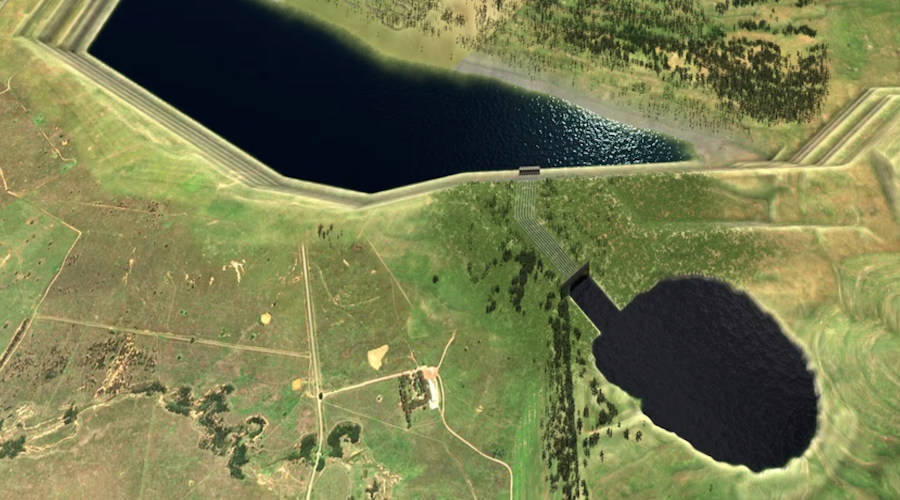CHARTS: This is how much gold miners really put into their host countries
Members of the World Gold Council (WGC), the market development organization for the global precious metal industry, spent last year a total of $47 billion in countries hosting their mining operations, a recent report published by the WGC shows.
According to “Responsible gold mining and value distribution,” gold miners belonging to the WGC provided work for more than 160,000 people and allocated 71% of their total investments, or $37.4 billion, to local suppliers of good and services in their host countries.
The United States ranked first in WCG members’ spending at US$7.5 billion, followed by Australia at $6.3 billion, Canada at $4.1 billion, Argentina at $3.7 billion and the Dominican Republic at $3.3 billion.
Payments to governments totalled $4.65 billion and the U.S. topped the list again at $750 million, followed by Peru at $582 million, Argentina at $482 million, Mexico at $368 million, and Australia at $363 million.
Terry Heymann, managing director of gold for development at the WGC and author of the report told MINING.com the study proves that, responsibly undertaken, gold mining and related activities can play an important role in achieving sustainable development and decreasing poverty in developing countries.
Asked about WCG members’ part in helping host countries to deal with illegal mining, he said the illicit activity remains a challenge that needs to be addressed through government-led collaborative efforts.
Extraction in conflict-affected areas
The WGC released its Conflict-Free Gold Standard in October 2012 to foster industry standards and set best practice for others to follow. Heymann believes that those principles have helped to stop gold mining from funding wars in conflict states encompasses the entire supply chain.
“Companies operating in conflict-affected areas have a responsibility to demonstrate their commitment to responsible mining, providing confidence to their customers, communities and other stakeholders,” he says.
“This activity should be encouraged so that the broader social and economic developmental benefits associated with gold-mining can play a role in helping to provide jobs and economic development,” Heymann adds.
The report drew information from 87 producing gold mines and 60 “non-producing operations” including exploration activities, pre-mine development and closed mine sites, across 26 different countries.
More News
Lower silver demand and higher supply to reduce global deficit by 21% in 2025
Silver faces fifth year of structural market deficit.
April 16, 2025 | 06:35 am
{{ commodity.name }}
{{ post.title }}
{{ post.date }}








2 Comments
Brandon Macdonald
According to the linked report, $47B is the total amount of expenditures, not the total amount of CSR. That’s a pretty big difference.
pepe herrera salgado
WHAT WE ALL need is education, not only to become weathier but to become better human beings, to pour money in Africa doenst necessarily means to be compassionate, most of the money poured in Africa ends up in the hands of bad africans like corrupt politicians and or guerillas, the only way to finish this vicious circle is education, but who will educated Africa? it can not come from outside it should be from inside!
By the way I am from south america and whenever there is a minig project let say at an altitude of 4000 masl where almost nobody lives, there is lots of local conflicts fulled by the ambitions of local politicians, if the people living around the projects would be more educated would easily disguise these oportunistic politicians and specially the so many NGO who say they fight for the good (be it environment, human rights or any other good cause), but in real just look for pocketing international cooperation money!!!! Education is what is required, but education from inside!!! you rich countries want to help? dont send money it just brings more problems or aggravates them, grant scholarships for the youth and the kids strictly from these poor areas!!!!